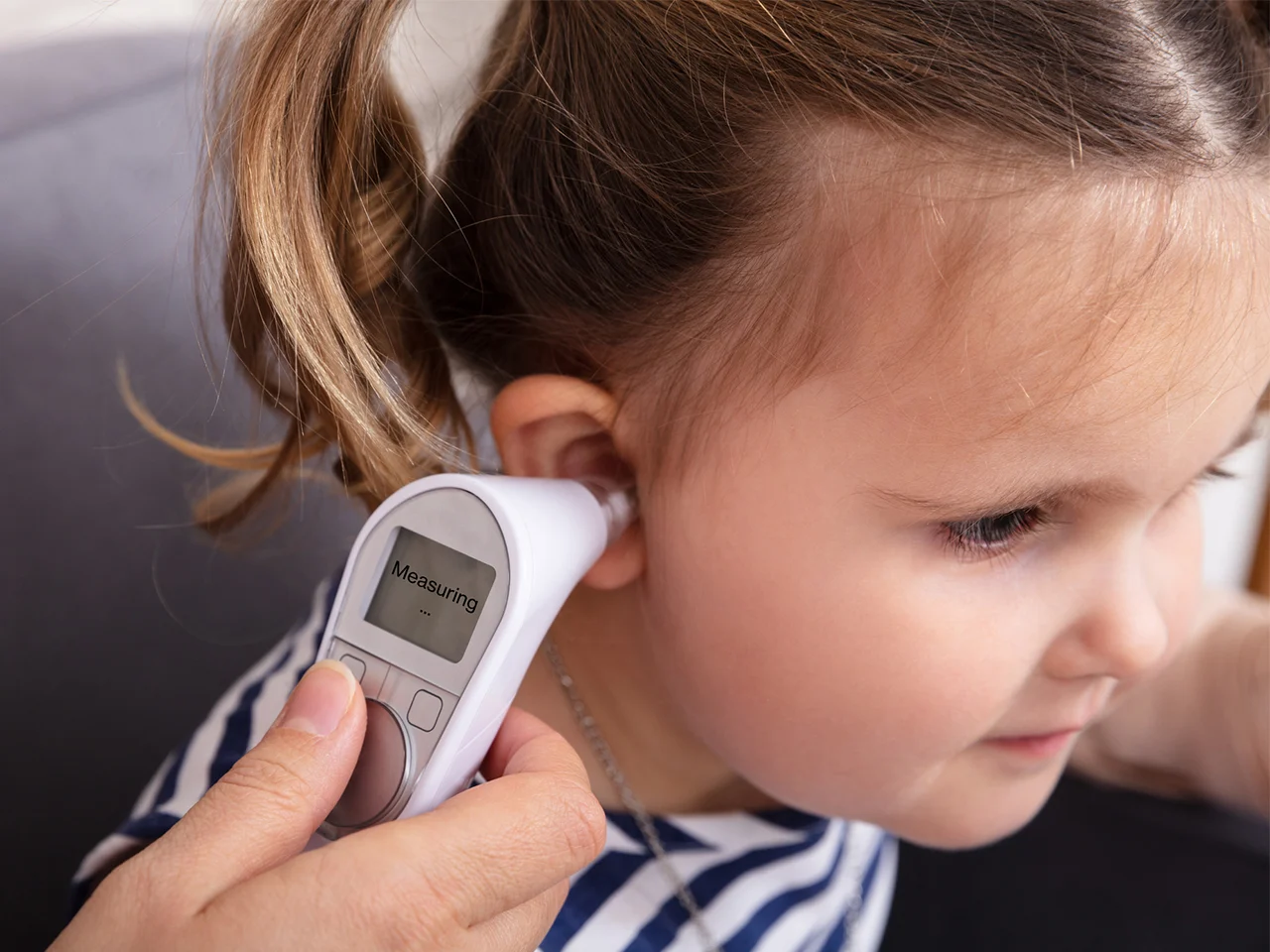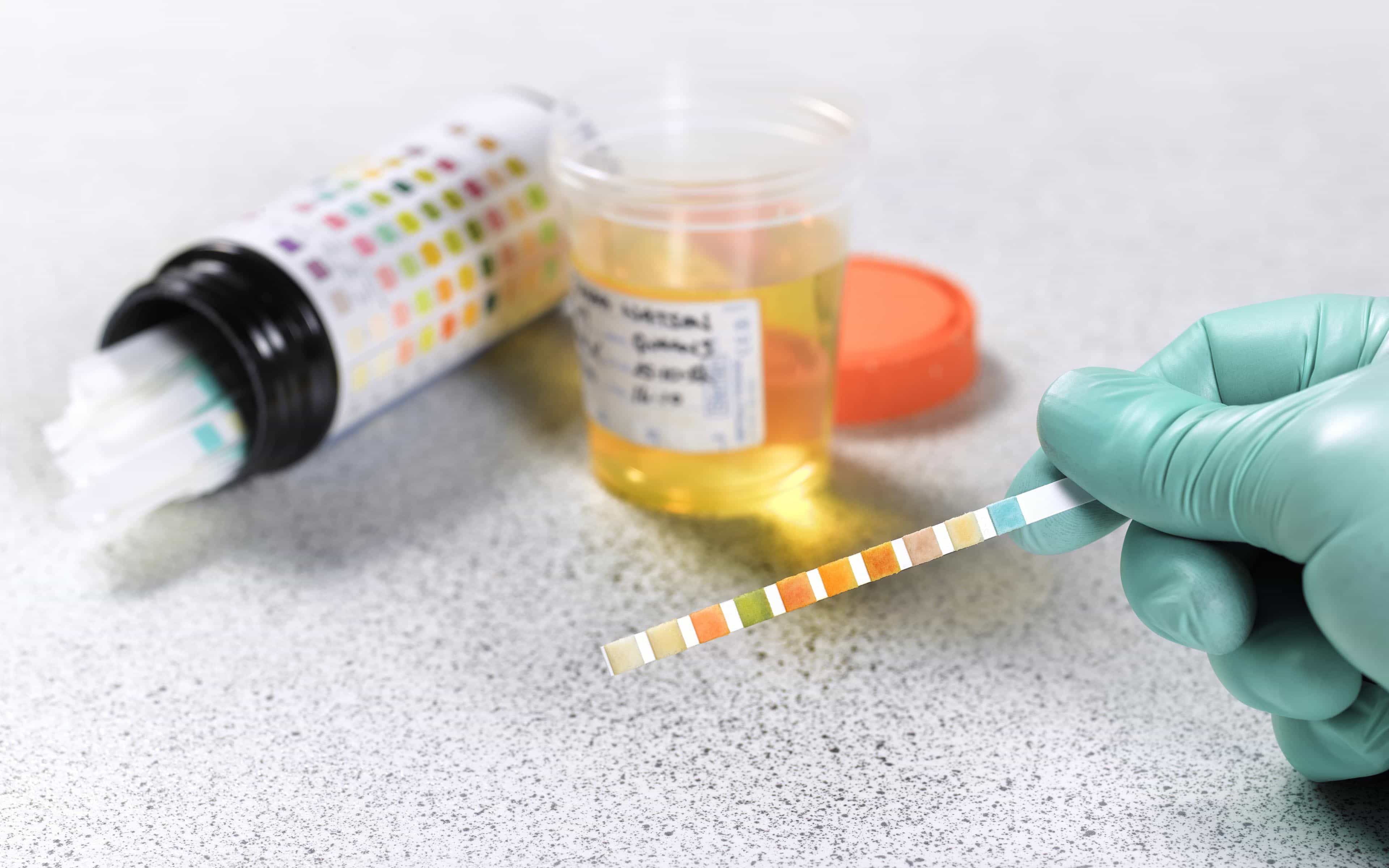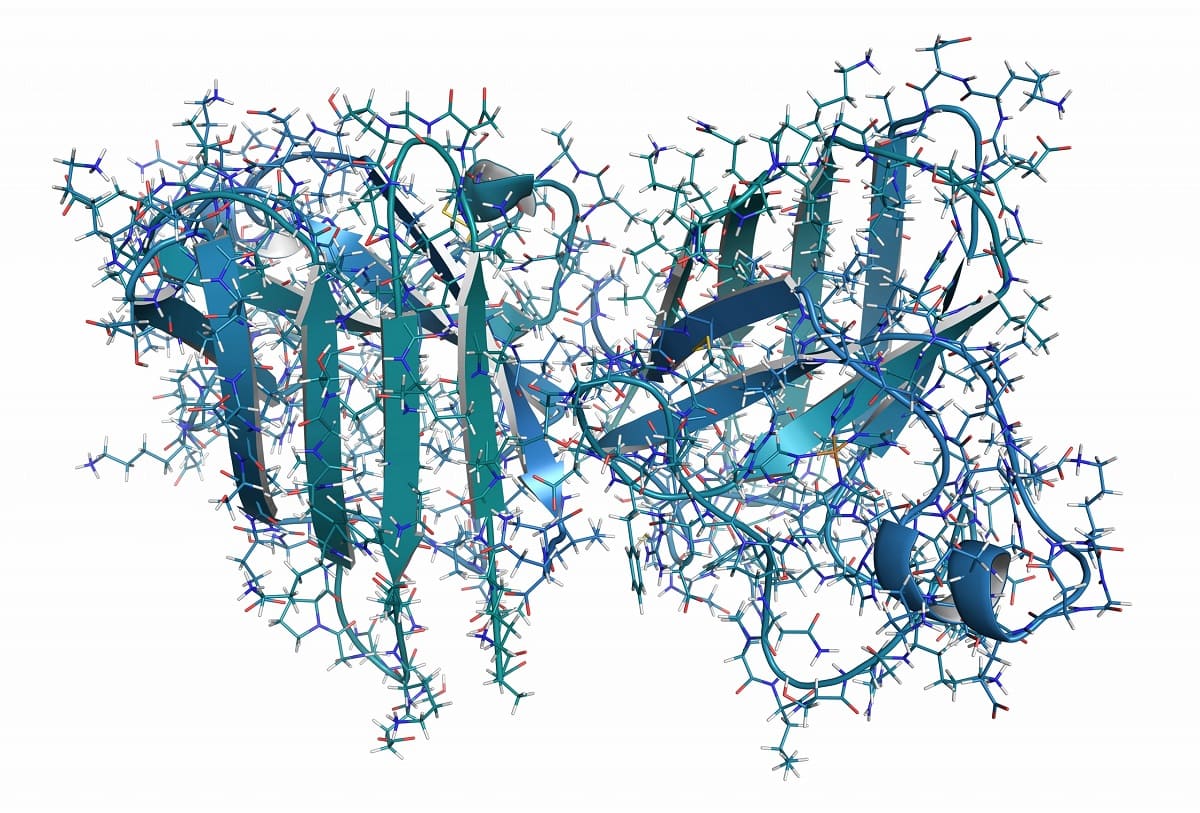Home>Health & Nutrition>Understanding Hyperthermia: Causes, Symptoms, And Treatment


Health & Nutrition
Understanding Hyperthermia: Causes, Symptoms, And Treatment
Published: February 19, 2024
Gain insights into hyperthermia, including its causes, symptoms, and treatment options. Learn how to protect your health with our comprehensive guide.
(Many of the links in this article redirect to a specific reviewed product. Your purchase of these products through affiliate links helps to generate commission for Temperatures.com, at no extra cost. Learn more)
Table of Contents
Introduction
Hyperthermia is a condition characterized by an elevated body temperature that exceeds the body's normal range. It is essential to distinguish hyperthermia from fever, as fever is the body's natural response to infection or illness, while hyperthermia results from external factors such as heat exposure or physical exertion. Understanding the causes, symptoms, and treatment options for hyperthermia is crucial for maintaining overall well-being, especially during hot weather or strenuous physical activities.
Hyperthermia can manifest in various forms, including heat exhaustion, heat stroke, and exertional heat illness. These conditions can pose serious health risks and require prompt attention to prevent complications. With rising global temperatures due to climate change, the incidence of hyperthermia-related illnesses is on the rise, making it increasingly important to raise awareness about this condition.
In this comprehensive guide, we will delve into the intricacies of hyperthermia, exploring its causes, symptoms, treatment options, and preventive measures. By gaining a deeper understanding of hyperthermia, individuals can take proactive steps to safeguard their health and well-being, especially in environments where heat exposure and physical exertion are prevalent.
Understanding the nuances of hyperthermia empowers individuals to recognize the warning signs, seek appropriate medical care, and adopt preventive strategies to mitigate the risk of developing this condition. By shedding light on the complexities of hyperthermia, this guide aims to equip readers with the knowledge needed to make informed decisions and prioritize their health in various settings, from outdoor recreational activities to occupational environments.
As we embark on this exploration of hyperthermia, it is important to approach the topic with a sense of curiosity and a commitment to promoting well-being. By unraveling the intricacies of hyperthermia, we can cultivate a deeper appreciation for the body's thermoregulatory mechanisms and the impact of environmental factors on our physiological state. Let's embark on this enlightening journey to unravel the mysteries of hyperthermia and empower ourselves with valuable insights for maintaining optimal health and vitality.
What is Hyperthermia?
Hyperthermia is a condition characterized by an abnormal increase in body temperature, typically resulting from the body's inability to dissipate heat effectively. Unlike fever, which is a regulated response to infection or illness, hyperthermia arises from external factors such as heat exposure, physical exertion, or a combination of both. This elevation in body temperature can lead to a range of heat-related illnesses, including heat exhaustion, heat stroke, and exertional heat illness.
The body maintains a delicate balance of temperature through a process known as thermoregulation. Under normal circumstances, the body's internal thermostat, located in the hypothalamus, works to keep the core temperature within a narrow range. However, when exposed to high temperatures or engaged in strenuous physical activities, the body may struggle to regulate its temperature, leading to hyperthermia.
It's important to note that hyperthermia can manifest in various forms, each with its own set of symptoms and severity. Heat exhaustion, for instance, is characterized by heavy sweating, rapid pulse, and fatigue, often accompanied by nausea and dizziness. If left unaddressed, heat exhaustion can progress to heat stroke, a life-threatening condition marked by a high body temperature, altered mental state, and potential organ damage.
Exertional heat illness, commonly observed in athletes and individuals engaging in intense physical exertion, is another form of hyperthermia that can result from prolonged exposure to heat and inadequate fluid intake. This condition can encompass heat cramps, heat syncope (fainting), and exertional heat stroke, underscoring the diverse spectrum of hyperthermia-related ailments.
In summary, hyperthermia represents a spectrum of heat-related conditions stemming from the body's inability to regulate its temperature in response to external heat sources or physical exertion. By understanding the nuances of hyperthermia, individuals can recognize the warning signs, seek appropriate medical care, and take proactive measures to prevent its onset. This knowledge serves as a cornerstone for promoting health and well-being, particularly in environments where heat exposure and physical activity are prevalent.
Common Causes of Hyperthermia
Hyperthermia can arise from various environmental and physiological factors, each contributing to an imbalance in the body's heat regulation mechanisms. Understanding the common causes of hyperthermia is essential for identifying potential risk factors and taking proactive measures to mitigate its onset. Here are the primary contributors to hyperthermia:
-
High Ambient Temperatures: Exposure to excessively high temperatures, especially during heatwaves or in hot, humid climates, can overwhelm the body's ability to dissipate heat, leading to hyperthermia. Prolonged exposure to intense heat without adequate cooling mechanisms can elevate the body's core temperature, triggering heat-related illnesses.
-
Physical Exertion: Engaging in strenuous physical activities, particularly in hot environments, can significantly elevate the body's temperature. Athletes, laborers, and individuals participating in outdoor recreational activities are particularly susceptible to exertional heat illness, as their bodies generate heat at a rapid pace, outpacing the cooling mechanisms.
-
Dehydration: Inadequate fluid intake or excessive fluid loss through sweating, vomiting, or diarrhea can impair the body's ability to regulate temperature. Dehydration diminishes the efficiency of sweating, a crucial cooling mechanism, thereby increasing the risk of heat-related conditions.
-
Clothing and Protective Gear: Wearing heavy or insulating clothing, especially in warm environments, can impede the body's ability to release heat, contributing to the development of hyperthermia. Similarly, individuals wearing impermeable protective gear, such as firefighters or industrial workers, face an elevated risk of heat-related illnesses due to limited heat dissipation.
-
Medical Conditions and Medications: Certain medical conditions, such as obesity, heart disease, and thyroid disorders, can compromise the body's thermoregulatory functions, making individuals more susceptible to hyperthermia. Additionally, medications that affect sweating, blood flow, or heat tolerance can exacerbate the risk of heat-related ailments.
-
Age and Vulnerable Populations: Infants, young children, older adults, and individuals with pre-existing health conditions are at a heightened risk of developing hyperthermia. Age-related physiological differences, diminished heat tolerance, and reduced thirst perception can amplify the susceptibility to heat-related illnesses in these populations.
By recognizing these common causes of hyperthermia, individuals can implement preventive strategies, such as staying hydrated, seeking shade, and modifying physical activities during peak heat periods, to reduce the risk of heat-related conditions. Moreover, raising awareness about these contributing factors is crucial for promoting a proactive approach to heat safety and fostering a culture of well-being in various settings.
Symptoms of Hyperthermia
Hyperthermia manifests through a spectrum of symptoms, each indicative of the body's struggle to regulate its temperature in response to external heat sources or physical exertion. Recognizing these symptoms is paramount for prompt intervention and mitigating the risk of complications associated with heat-related illnesses.
-
Heat Exhaustion: This early stage of hyperthermia is characterized by heavy sweating, rapid pulse, and elevated body temperature. Individuals may experience weakness, fatigue, nausea, and dizziness, often accompanied by headache and muscle cramps. The skin may feel cool and moist to the touch, signaling the body's attempt to dissipate heat through sweating.
-
Heat Stroke: As hyperthermia progresses, heat stroke can ensue, presenting as a life-threatening condition with severe symptoms. High body temperature (often exceeding 104°F or 40°C), altered mental state, confusion, agitation, and potential loss of consciousness are hallmark indicators of heat stroke. The skin may become hot, dry, and flushed, as the body's cooling mechanisms falter, leading to a critical rise in core temperature.
-
Exertional Heat Illness: Individuals engaged in strenuous physical activities, such as athletes and laborers, may exhibit exertional heat illness, encompassing heat cramps, heat syncope (fainting), and exertional heat stroke. Heat cramps manifest as painful muscle spasms, often in the legs or abdomen, due to electrolyte imbalances resulting from excessive sweating. Heat syncope involves lightheadedness, fainting, and dizziness, typically arising from inadequate blood flow to the brain. Exertional heat stroke, the most severe form, presents with symptoms akin to heat stroke, necessitating immediate medical attention.
-
Hyponatremia: In some cases, hyperthermia can lead to hyponatremia, a condition characterized by low sodium levels in the blood. Symptoms include nausea, vomiting, headache, confusion, and in severe cases, seizures and coma. Hyponatremia can arise from excessive fluid intake without adequate electrolyte replenishment, particularly during prolonged physical exertion in hot environments.
By familiarizing themselves with these symptoms, individuals can swiftly recognize the warning signs of hyperthermia and take decisive actions to address the condition. Seeking shade, hydrating adequately, and employing cooling measures are crucial steps in managing the symptoms of hyperthermia and preventing its progression to more severe forms. Additionally, educating communities and organizations about these symptoms fosters a proactive approach to heat safety, safeguarding individuals from the potentially detrimental effects of hyperthermia.
Treatment Options for Hyperthermia
Prompt and effective treatment is essential in managing hyperthermia and preventing its progression to life-threatening conditions. When confronted with hyperthermia, swift intervention can mitigate the risk of complications and promote recovery. Here are the primary treatment options for hyperthermia:
-
Heat Exhaustion Management: Individuals exhibiting symptoms of heat exhaustion, such as heavy sweating, fatigue, and nausea, should be promptly moved to a cool, shaded area. Encouraging them to rest and rehydrate with water or oral rehydration solutions can aid in restoring fluid balance. Additionally, applying cool, wet cloths to the skin and utilizing fans or air conditioning can facilitate heat dissipation and alleviate discomfort.
-
Heat Stroke Emergency Response: Heat stroke demands immediate medical attention. Contacting emergency services and initiating rapid cooling measures are paramount. Immersing the individual in a cool bath or applying ice packs to the armpits, groin, and neck can expedite the reduction of body temperature. Continuous monitoring of vital signs and mental status is crucial until medical professionals assume care.
-
Hydration and Electrolyte Restoration: Replenishing fluids and electrolytes is vital in managing hyperthermia. Encouraging individuals to drink water or oral rehydration solutions, particularly in cases of heat exhaustion or exertional heat illness, aids in restoring hydration and electrolyte balance. Avoiding beverages containing caffeine or alcohol is advisable, as they can exacerbate dehydration.
-
Medical Evaluation and Support: Seeking medical assessment is imperative, especially in cases of exertional heat stroke or severe hyperthermia. Healthcare professionals can conduct comprehensive evaluations, administer intravenous fluids, and monitor for potential complications, such as organ damage or hyponatremia. Timely medical intervention is instrumental in ensuring optimal recovery and preventing long-term health implications.
-
Cooling Measures and Environmental Modifications: Employing cooling measures, such as cold packs, misting fans, or cool water immersion, assists in lowering body temperature and alleviating discomfort. Modifying the environment to reduce heat exposure, such as seeking shade, utilizing air conditioning, or adjusting physical activity levels, is pivotal in preventing the exacerbation of hyperthermia.
By implementing these treatment options, individuals can effectively manage hyperthermia and facilitate the restoration of normal body temperature and physiological equilibrium. Furthermore, raising awareness about these interventions within communities, workplaces, and recreational settings is essential for fostering a proactive approach to heat safety and safeguarding individuals from the adverse effects of hyperthermia.
Prevention of Hyperthermia
Preventing hyperthermia entails a proactive approach to heat safety, encompassing various strategies to mitigate the risk of heat-related illnesses in diverse settings. By implementing preventive measures, individuals can safeguard their well-being and minimize the potential impact of hyperthermia. Here are key strategies for preventing hyperthermia:
1. Hydration and Fluid Management
Maintaining adequate hydration is fundamental in preventing hyperthermia. Individuals should prioritize regular fluid intake, particularly when exposed to high temperatures or engaging in physical activities. Water, electrolyte-rich beverages, and oral rehydration solutions play a pivotal role in replenishing fluids lost through sweating and promoting optimal hydration. Monitoring urine color can serve as a simple indicator of hydration status, with pale yellow urine signaling adequate hydration.
2. Heat Safety Practices
Adhering to heat safety practices is essential for mitigating the risk of hyperthermia. This includes seeking shade during peak sun hours, especially between 10 a.m. and 4 p.m., when the sun's intensity is highest. Wearing lightweight, breathable clothing and utilizing wide-brimmed hats and sunglasses provide additional protection from direct sunlight. Furthermore, scheduling outdoor activities during cooler times of the day and taking frequent breaks in shaded areas contribute to heat safety.
3. Environmental Modifications
Modifying the environment to minimize heat exposure is crucial in preventing hyperthermia. Utilizing air conditioning, fans, or evaporative cooling systems in indoor spaces helps maintain a comfortable temperature. In outdoor settings, creating shaded areas with umbrellas or canopies offers respite from direct sunlight. Additionally, implementing engineering controls, such as ventilation and insulation in occupational settings, enhances heat safety for workers.
Read more: Understanding Fever: Causes And Symptoms
4. Physical Activity Management
Managing physical activity in hot environments is paramount for preventing exertional heat illness. Individuals should acclimate gradually to hot conditions, allowing the body to adapt to the environmental heat stress. Adjusting the intensity and duration of physical activities during hot weather, as well as scheduling frequent rest breaks in shaded areas, reduces the risk of hyperthermia. Coaches, trainers, and employers play a pivotal role in promoting safe exercise and work practices in warm environments.
5. Education and Awareness
Raising awareness about hyperthermia and heat safety practices is instrumental in fostering a culture of prevention. Educational initiatives targeting schools, workplaces, and community organizations can disseminate vital information about the signs and symptoms of hyperthermia, as well as the importance of hydration, shade utilization, and environmental modifications. By empowering individuals with knowledge, proactive measures can be embraced, reducing the incidence of heat-related illnesses.
6. Vulnerable Population Support
Providing support for vulnerable populations, including the elderly, young children, and individuals with pre-existing health conditions, is crucial in preventing hyperthermia. Caregivers, healthcare providers, and community organizations should implement measures to ensure these individuals have access to cool environments, hydration assistance, and regular health assessments during periods of elevated temperatures. By prioritizing the well-being of vulnerable groups, the impact of hyperthermia can be mitigated.
By integrating these preventive strategies into daily routines, recreational activities, and occupational practices, individuals and organizations can effectively reduce the risk of hyperthermia and promote a culture of heat safety. Embracing a proactive approach to prevention empowers individuals to prioritize their health and well-being, fostering resilience in the face of environmental heat stress.
Conclusion
In conclusion, hyperthermia represents a multifaceted challenge that demands heightened awareness, proactive measures, and a commitment to promoting heat safety in various environments. By unraveling the complexities of hyperthermia, individuals can gain valuable insights into the causes, symptoms, treatment options, and preventive strategies associated with this condition. The comprehensive understanding of hyperthermia serves as a cornerstone for fostering a culture of well-being, particularly in the face of escalating global temperatures and the increasing prevalence of heat-related illnesses.
Recognizing the distinction between hyperthermia and fever is pivotal, as it empowers individuals to discern the underlying mechanisms and triggers of elevated body temperature. While fever is often a response to infection or illness, hyperthermia arises from external factors such as heat exposure, physical exertion, or a combination of both. This differentiation underscores the importance of tailoring preventive and management strategies to address the specific challenges posed by hyperthermia.
The common causes of hyperthermia, ranging from high ambient temperatures and physical exertion to dehydration and vulnerable populations, highlight the diverse risk factors that contribute to heat-related illnesses. By acknowledging these contributing factors, individuals can implement targeted interventions, such as hydration practices, environmental modifications, and physical activity management, to mitigate the risk of hyperthermia and promote heat safety.
Furthermore, the recognition of hyperthermia's symptoms, spanning from heat exhaustion and heat stroke to exertional heat illness and hyponatremia, equips individuals with the knowledge needed to swiftly identify warning signs and initiate appropriate interventions. Timely recognition and management of these symptoms are pivotal in preventing the progression of hyperthermia to life-threatening conditions, underscoring the significance of proactive vigilance and swift response.
The treatment options for hyperthermia, encompassing heat exhaustion management, heat stroke emergency response, hydration and electrolyte restoration, medical evaluation, and cooling measures, form a comprehensive toolkit for addressing hyperthermia's diverse manifestations. By familiarizing individuals with these treatment modalities, the potential impact of hyperthermia can be mitigated, promoting optimal recovery and well-being.
Preventing hyperthermia requires a multifaceted approach, encompassing hydration and fluid management, heat safety practices, environmental modifications, physical activity management, education and awareness, and support for vulnerable populations. By integrating these preventive strategies into daily routines and organizational practices, the risk of hyperthermia can be effectively minimized, fostering a culture of heat safety and resilience.
In essence, understanding hyperthermia empowers individuals to prioritize their health, adopt proactive measures, and contribute to the cultivation of heat-safe environments. By embracing a holistic approach to heat safety, communities, workplaces, and recreational settings can mitigate the impact of hyperthermia, safeguarding individuals from the adverse effects of heat-related illnesses. This comprehensive understanding of hyperthermia serves as a beacon for promoting well-being, resilience, and informed decision-making in the face of environmental heat stress.













